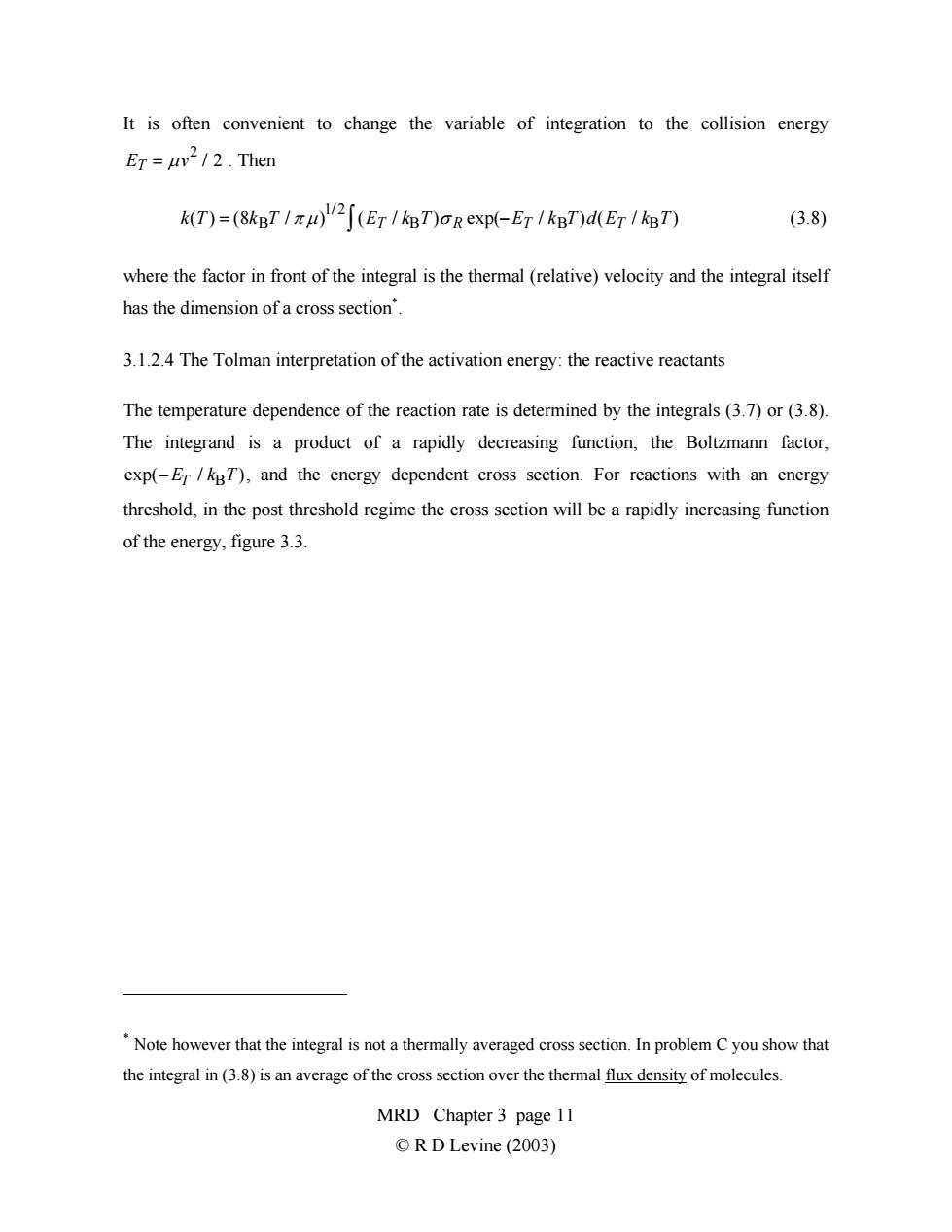正在加载图片...

It is often convenient to change the variable of integration to the collision energy ET=uv2/2.Then k(T)=(8kBT/zp)2[(ET/kBT)oRexp(-ET/kgT)d(ET/kpT) (3.8) where the factor in front of the integral is the thermal(relative)velocity and the integral itself has the dimension of a cross section'. 3.1.2.4 The Tolman interpretation of the activation energy:the reactive reactants The temperature dependence of the reaction rate is determined by the integrals(3.7)or(3.8). The integrand is a product of a rapidly decreasing function,the Boltzmann factor, exp(-ET/kBT),and the energy dependent cross section.For reactions with an energy threshold,in the post threshold regime the cross section will be a rapidly increasing function of the energy,figure 3.3. Note however that the integral is not a thermally averaged cross section.In problem C you show that the integral in(3.8)is an average of the cross section over the thermal flux density of molecules. MRD Chapter 3 page 11 ©R D Levine(2003)It is often convenient to change the variable of integration to the collision energy ET = µv 2 / 2 . Then k(T) = (8kBT / π µ) (3.8) 1/2 (ET ∫ / kBT)σ R exp(−ET / kBT)d(ET / kBT) where the factor in front of the integral is the thermal (relative) velocity and the integral itself has the dimension of a cross section* . 3.1.2.4 The Tolman interpretation of the activation energy: the reactive reactants The temperature dependence of the reaction rate is determined by the integrals (3.7) or (3.8). The integrand is a product of a rapidly decreasing function, the Boltzmann factor, exp(−ET / kBT), and the energy dependent cross section. For reactions with an energy threshold, in the post threshold regime the cross section will be a rapidly increasing function of the energy, figure 3.3. * Note however that the integral is not a thermally averaged cross section. In problem C you show that the integral in (3.8) is an average of the cross section over the thermal flux density of molecules. MRD Chapter 3 page 11 © R D Levine (2003)